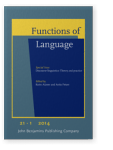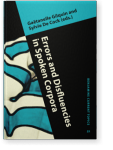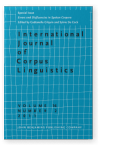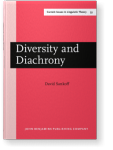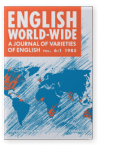Gunnel Tottie
List of John Benjamins publications for which Gunnel Tottie plays a role.
2016 Planning what to say: Uh and um among the pragmatic markers Outside the Clause: Form and function of extra-clausal constituents, Kaltenböck, Gunther, Evelien Keizer and Arne Lohmann (eds.), pp. 97–122 | Article
Based on data from the Santa Barbara Corpus of Spoken American English, this paper argues that the vocalizations [ə(:)] and [ə(:)m]), usually transcribed uh and um, can be regarded as pragmatic markers, rather than as undesirable disfluencies or hesitation markers. It is shown that they are… read more
2014 On the use of uh and um in American English Discourse linguistics: Theory and practice, Aijmer, Karin and Anita Fetzer (eds.), pp. 6–29 | Article
This study examines the use of uh and um — referred to jointly as UHM — in 14 conversations totaling c. 62,350 words from the Santa Barbara Corpus of Spoken American English. UHM was much less frequent than in British English with 7.5 vs. 14.5 instances per million words in the British National… read more
2013 Uh and Um as sociolinguistic markers in British English Errors and Disfluencies in Spoken Corpora, Gilquin, Gaëtanelle and Sylvie De Cock (eds.), pp. 33–57 | Article
This study is based on the British National Corpus (BNC) and also takes data from the London-Lund Corpus (LLC) into account. It shows that the so-called filled pauses er/uh and erm/um are sociolinguistic markers that differentiate between registers of English and along gender, age and… read more
2011 Uh and Um as sociolinguistic markers in British English Errors and Disfluencies in Spoken Corpora, Gilquin, Gaëtanelle and Sylvie De Cock (eds.), pp. 173–197 | Article
This study is based on the British National Corpus (BNC) and also takes data from the London-Lund Corpus (LLC) into account. It shows that the so-called filled pauses er/uh and erm/um are sociolinguistic markers that differentiate between registers of English and along gender, age and… read more
1986 Is there anadverbial in this text? (and if so, what is it doing there?) Diversity and Diachrony, Sankoff, David, pp. 139–152 | Article
1985 The Negation of Epistemic Necessity in Present-Day British and American English English World-Wide 6:1, pp. 87–116 | Article

